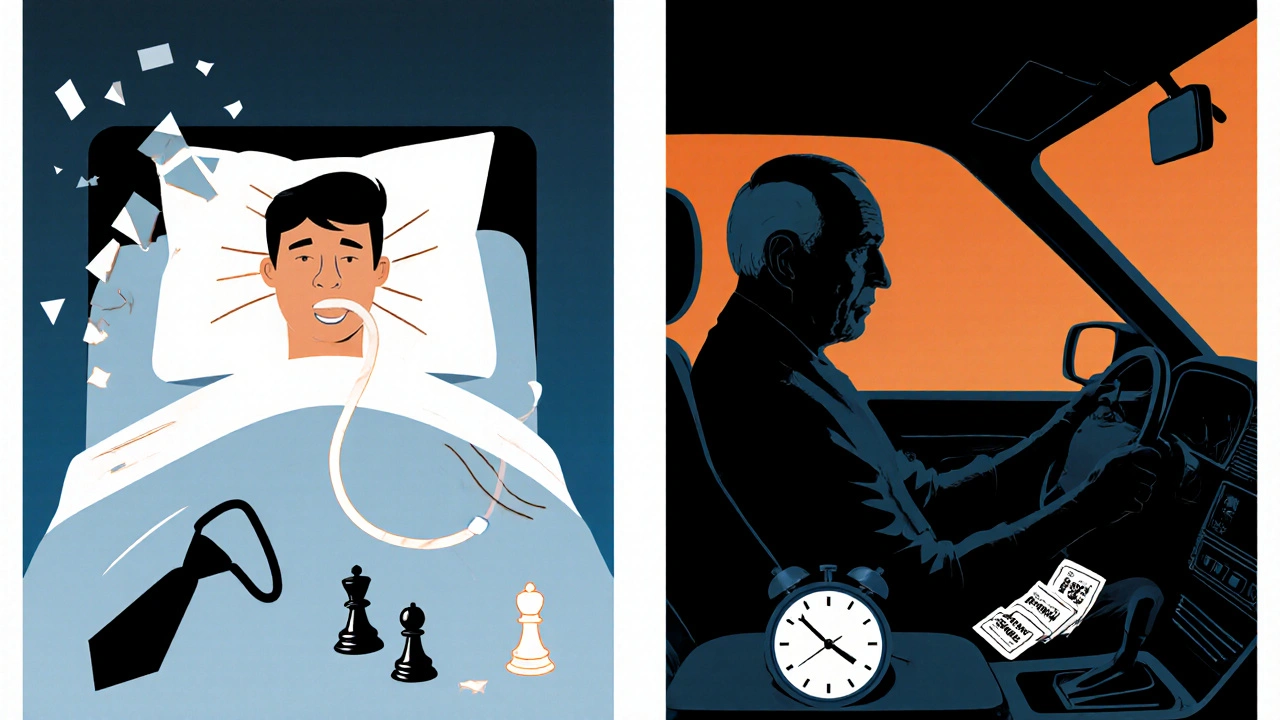When cancer is caught early, your doctors will talk to you about local control - stopping the tumor before it spreads. Two main options come up again and again: radiation or surgery. Both aim to remove or destroy the cancer in one area, but they’re very different in how they work, what they cost you, and what life looks like afterward.
There’s no single right answer. What’s best for one person might be terrible for another. The decision isn’t just about which treatment kills the cancer faster - it’s about which one lets you live the life you want afterward. For prostate and lung cancers, which make up nearly a third of all new cancer cases in the U.S., this choice comes up constantly. And the data doesn’t always point to one clear winner.
Surgery: Taking It Out
Surgery means cutting the tumor out. For prostate cancer, that’s a radical prostatectomy - removing the whole gland. For lung cancer, it’s often removing a lobe of the lung or even part of it. The goal? Get it all out in one go. Pathologists then examine the tissue under a microscope to see exactly how far the cancer went. That’s something radiation can’t do.
It’s a big procedure. A prostatectomy usually takes 2 to 4 hours. You’ll stay in the hospital for 1 to 3 days. Recovery is intense for the first few weeks. You’ll need help with daily tasks. Walking, lifting, even going to the bathroom can be hard at first. But the treatment itself is done. One surgery, one recovery period. You’re not coming back every day for weeks.
For lung cancer, surgery is even more demanding. A lobectomy via VATS (keyhole surgery) or robotic system still means 3 to 7 days in the hospital. Full recovery can take 6 to 8 weeks. You’ll be tired. Your breathing will feel different. But if you’re healthy enough, surgery gives you the best shot at long-term survival. A 2022 study of over 30,000 early-stage lung cancer patients found that those who had surgery had a 71.4% five-year survival rate. Those who got radiation instead - even the most advanced form, SBRT - had 55.9%. That’s a big gap.
Radiation: Zapping It From the Outside
Radiation doesn’t cut. It uses high-energy beams to destroy cancer cells. Modern machines target within 1 to 2 millimeters. You don’t feel anything during treatment. No anesthesia. No incisions.
But it’s a grind. For prostate cancer, you’ll show up every weekday for 7 to 9 weeks. Each session takes 15 to 30 minutes. You drive in, lie down, get zapped, and leave. It’s not life-threatening, but it’s exhausting. You’re tied to the clinic. If you live far away, you’re looking at daily commutes for over two months. That’s hard on work, family, and your mental health.
There’s a faster version called SBRT - stereotactic body radiation therapy. For early lung cancer, it’s done in just 1 to 5 sessions. No hospital stay. You’re back to normal in days. But SBRT isn’t for everyone. It’s mostly used when surgery isn’t an option - because of age, heart disease, or other health problems. Even then, survival rates are lower than surgery.
Which One Kills More Cancer?
Here’s where it gets messy. For prostate cancer, two major studies give different answers.
The ProtecT trial, published in 2016, followed 1,643 men with low-risk prostate cancer for 10 years. Survival was nearly identical: 96.8% after surgery, 95.7% after radiation. The cancer came back more often after radiation - 13.4% vs. 12.9% after surgery - but not enough to change survival. For low-risk cases, both work.
But a different study, from UCSF in 2010, looked at 91,000 men - including high-risk cases. The results were stark. At 15 years, surgery gave a 62% survival rate. Radiation gave 52%. That’s a 10-point gap. Why the difference? The ProtecT trial mostly included men with slow-growing cancer. The UCSF study included aggressive cases too. Surgery may be better when the cancer is more dangerous.
For lung cancer, the data is clearer. If you’re healthy enough for surgery, it’s the gold standard. SBRT is a great alternative for those who can’t handle surgery, but it doesn’t beat it. The 71.4% vs. 55.9% survival gap doesn’t lie.

Side Effects: What You Lose After Treatment
Survival isn’t everything. What kind of life do you get after?
For prostate cancer, surgery hits urinary and sexual function hard. The NIH study of 1,692 men found that 14% of surgical patients had urinary leakage 10 years later. For radiation, it was just 4%. But radiation brings other problems: 8% had serious bowel issues after 10 years. Surgery? Only 3%.
At 6 months after treatment, urinary leakage and erectile dysfunction were 2.5 times more common after surgery. But over time, the gap closes. After 10 years, the differences are smaller - but still there. Radiation doesn’t cause sudden impotence like surgery can. But it can slowly damage nerves and blood vessels over years, leading to problems later.
For lung cancer, surgery means less lung capacity. You might get winded easier. Radiation can scar lung tissue, causing coughing or shortness of breath long-term. Neither is pleasant, but they affect different parts of your life.
Who Gets Which Treatment?
It’s not just about cancer type. Your age, other health issues, and what you value matter just as much.
If you’re 75 with heart disease and early lung cancer? SBRT might be your best bet. You can’t survive the surgery. If you’re 55, fit, and have high-risk prostate cancer? Surgery gives you the best shot at living 15+ years.
Some men hate the idea of a permanent catheter or incontinence pads. Others can’t stand the thought of daily radiation for months. One man in Melbourne told me he chose radiation because he didn’t want to miss work. Another picked surgery because he didn’t want to be tied to a clinic for two months.
And then there’s the cost. Radiation isn’t free. In Australia, Medicare covers most of it, but you might pay for travel, parking, time off work. Surgery has hospital fees, but it’s one event. You pay once. Radiation? You pay every day for weeks.
What Experts Say
Dr. Matthew Cooperberg from UCSF put it bluntly: “There’s relatively little high-quality evidence on which to base current treatments.” That’s not because the science is bad. It’s because every patient is different.
The American Society of Clinical Oncology says you should talk to both a surgeon and a radiation oncologist before deciding. Not one. Not the other. Both. That’s not just a formality. It’s critical. A surgeon will focus on removing the tumor. A radiation oncologist will focus on targeting it. Both are right - but only one is right for you.
At Cedars-Sinai, Dr. Christopher King says: “Radiation isn’t what people imagine.” He’s right. People think of old-school radiation - burns, nausea, hair loss. Modern radiation is precise. It’s like a scalpel made of light. But it still takes time. And it still has side effects.

What’s Next? Focal Therapy and Proton Beams
There’s new stuff coming. Focal therapy for prostate cancer treats just the tumor, not the whole gland. It’s still experimental, but early results show less incontinence and impotence. The PARTICLE trial, with results expected in 2025, is comparing it to standard treatments.
Proton beam therapy is another option. It’s more targeted than traditional radiation. Less damage to healthy tissue. But it’s expensive, hard to access, and not proven to be better than modern photon radiation for most cancers.
Right now, the standard remains: surgery for those who can handle it. Radiation for those who can’t - or who choose it.
How to Decide
Here’s what to do:
- Get your cancer staged properly. Is it low, intermediate, or high risk? That changes everything.
- See both a urologist (or thoracic surgeon) AND a radiation oncologist. Ask each: “If this were your father, what would you do?”
- Ask about side effects - not just “what are the risks?” but “what’s life like six months in? Two years? Ten years?”
- Think about your life. Can you handle daily trips for two months? Do you want to risk incontinence? Are you okay with long-term bowel issues?
- Use tools like the Prostate Cancer Foundation’s decision tool. It’s based on data from over 129,000 patients. It doesn’t decide for you - but it shows you what others with your profile chose and how they fared.
There’s no rush. Take your time. This isn’t a decision you make in 10 minutes. It’s one you live with for years.
Final Thought
Radiation and surgery aren’t rivals. They’re tools. One cuts. One zaps. One is quick. One is slow. One hurts more at first. One hurts more later. Neither is perfect.
The best choice isn’t the one with the highest survival rate. It’s the one that lets you live your life - with as little disruption, pain, and fear as possible. And that’s different for everyone.
Is radiation better than surgery for prostate cancer?
It depends. For low-risk prostate cancer, both work just as well at keeping you alive. For high-risk cases, surgery may give you a better long-term survival chance. But radiation has fewer immediate side effects like incontinence and impotence. The choice isn’t about which is stronger - it’s about which side effects you’re willing to live with.
Can I have radiation after surgery if the cancer comes back?
Yes, but it’s more complicated. If cancer returns after surgery, radiation can still be used - it’s called salvage radiation. But the tissue is scarred from surgery, so radiation has to be more careful. Side effects like bowel and bladder problems are more likely. It’s not ideal, but it’s often the best option.
Is surgery always better for lung cancer?
If you’re healthy enough to handle it, yes. Surgery gives the highest chance of long-term survival for early-stage lung cancer. But if you have heart disease, COPD, or other serious health issues, surgery can be too risky. That’s when SBRT - a few high-dose radiation sessions - becomes the standard. It’s not as good as surgery, but it’s better than doing nothing.
How long does recovery take after radiation vs. surgery?
Surgery recovery is intense but short. You’re out of the hospital in a few days, but full recovery takes 6 to 8 weeks. Radiation recovery is slower. You feel fine during treatment, but side effects like fatigue, bowel changes, or urinary issues build up over weeks. You might not feel normal for months after the last session.
Does radiation cause cancer later in life?
It’s possible, but very rare. Modern radiation is so precise that it barely affects healthy tissue. The risk of a second cancer from radiation is less than 1% over 20 years - far lower than the risk of your original cancer coming back. The bigger concern is long-term side effects, not new cancers.


Liam Dunne
November 17, 2025 AT 13:03Jennifer Stephenson
November 18, 2025 AT 16:41Vera Wayne
November 19, 2025 AT 22:31Philip Rindom
November 21, 2025 AT 14:28Patrick Merk
November 22, 2025 AT 11:35kanishetti anusha
November 24, 2025 AT 03:23Ashley B
November 24, 2025 AT 11:38Rodney Keats
November 24, 2025 AT 16:21Laura-Jade Vaughan
November 25, 2025 AT 12:55roy bradfield
November 26, 2025 AT 04:38Segun Kareem
November 27, 2025 AT 04:16Jess Redfearn
November 27, 2025 AT 18:29